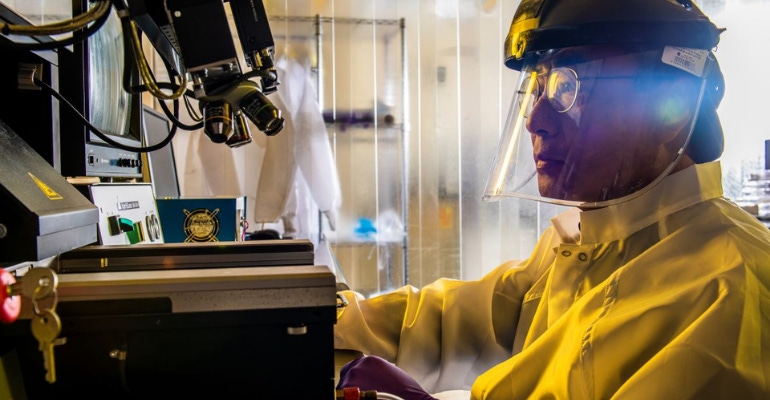Researchers at Missouri S&T received a patent for resorbable medical implants that are used for diagnosis and treatment. The implants are produced with bioactive glass and metals and are the first resorbable implants to use inorganic materials.
August 9, 2021

Medical devices made of bioactive glass and metals that dissolve at the end of their operational lifespan could replace other types of implants and eliminate the need for invasive removal once they have served their purpose, according to researchers at Missouri University of Science and Technology (Missouri S&T).
The researchers recently received a patent for their implant, and it is available for licensing through Missouri S&T’s technology transfer and economic development office. See bottom of this story for contact information.
“Glass is an excellent material for packaging and substrate layers in implanted solid-state devices including sensors and actuators,” said Chang-Soo Kim, PhD professor and graduate coordinator of electrical engineering at Missouri S&T. “Depending on the combination of materials, you can develop a bioactive glass that degrades very slowly or very quickly, based on the required operational time for the device.”
As lead researcher on the project, Kim worked with Richard Brow, PhD, Curators’ distinguished professor of ceramic engineering and interim deputy provost for academic excellence at Missouri S&T; and Delbert Day, PhD, Curators’ distinguished professor emeritus of ceramic engineering and inventor of bioactive glasses for cancer treatment, bone tissue regeneration, and wound healing. Kim designed the electrical functions of the devices, and Brow and Day designed the glasses used in the implants. Matthew O’Keefe, PhD, a former professor of metallurgical engineering at S&T, also contributed to the research.
Kim said the resorbable implants eliminate the need for additional surgery to remove a sensor or other functional device after it is no longer needed. He says that is especially important because biodegradable devices are designed to be implanted in the brain or other organs deep inside the body. Kim says the implants can also be used for drug delivery or tissue healing.
“Bioactive glasses are a unique strength of Missouri S&T,” said Costas Tsatsoulis, PhD, vice chancellor of research and graduate studies at S&T. “Since Dr. Day received a patent in 2002 for glass microspheres used in radiation therapy, new bioactive glasses have played an important role in healing and medical therapy.”
For information on licensing, contact John Woodson, interim director of technology transfer and economic development, at 573-341-7544 or email [email protected].
About the Author(s)
You May Also Like


